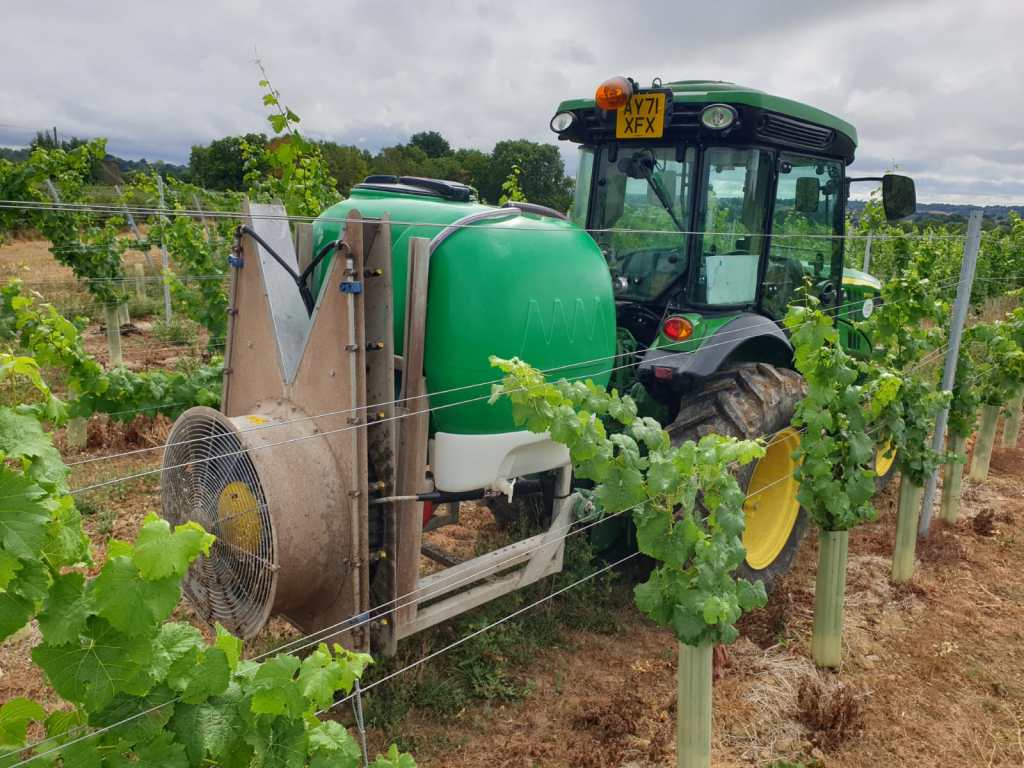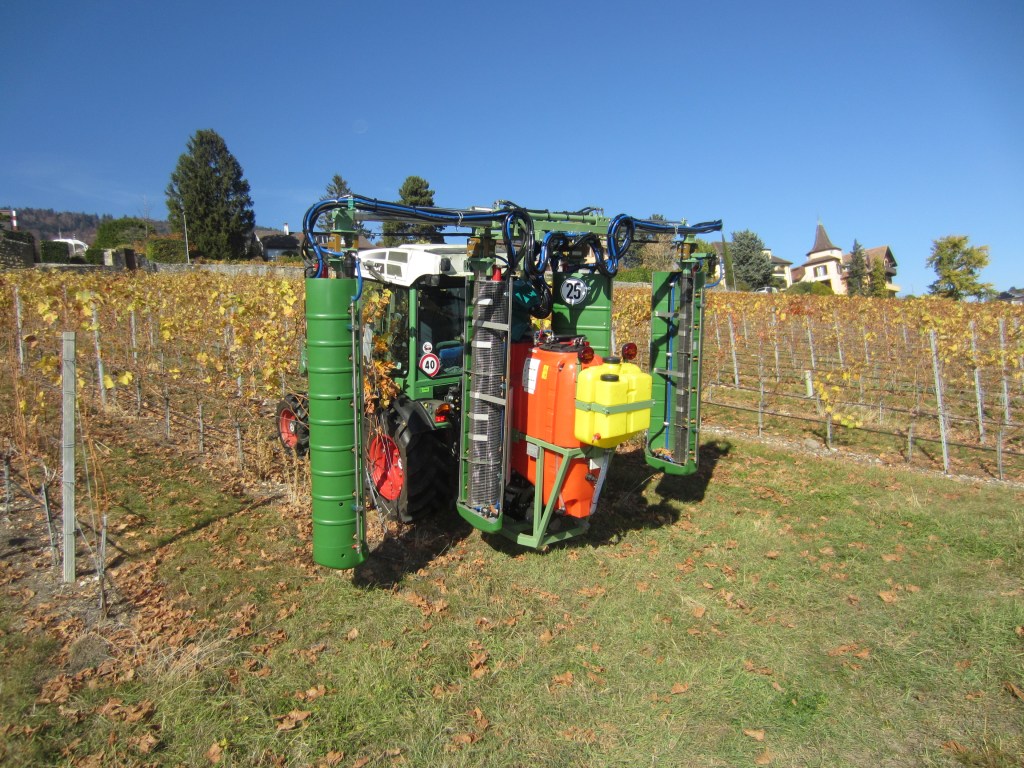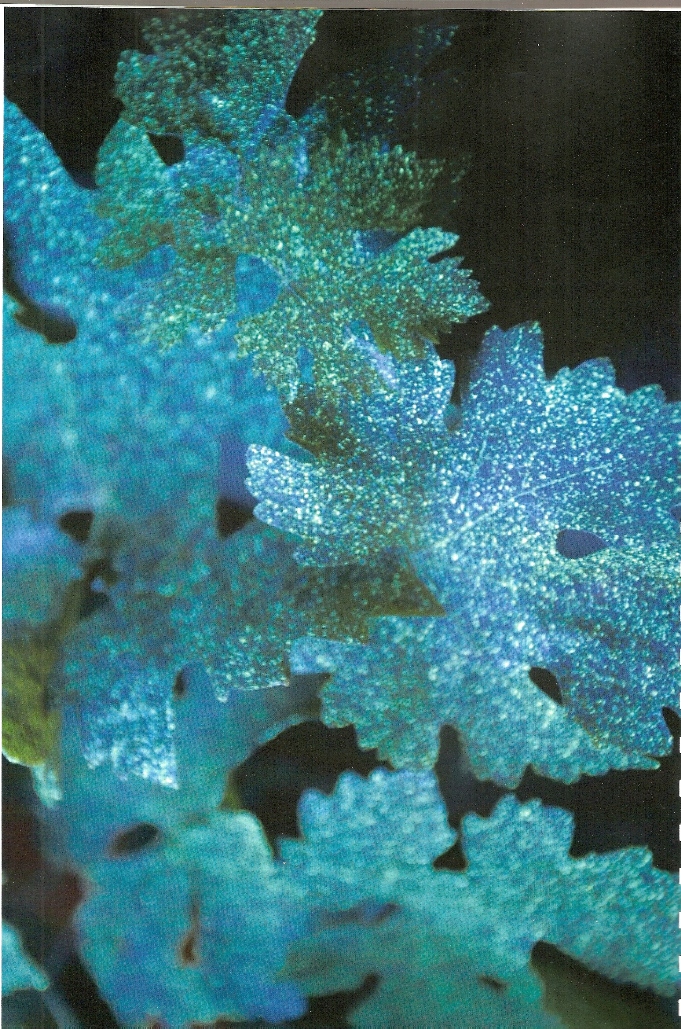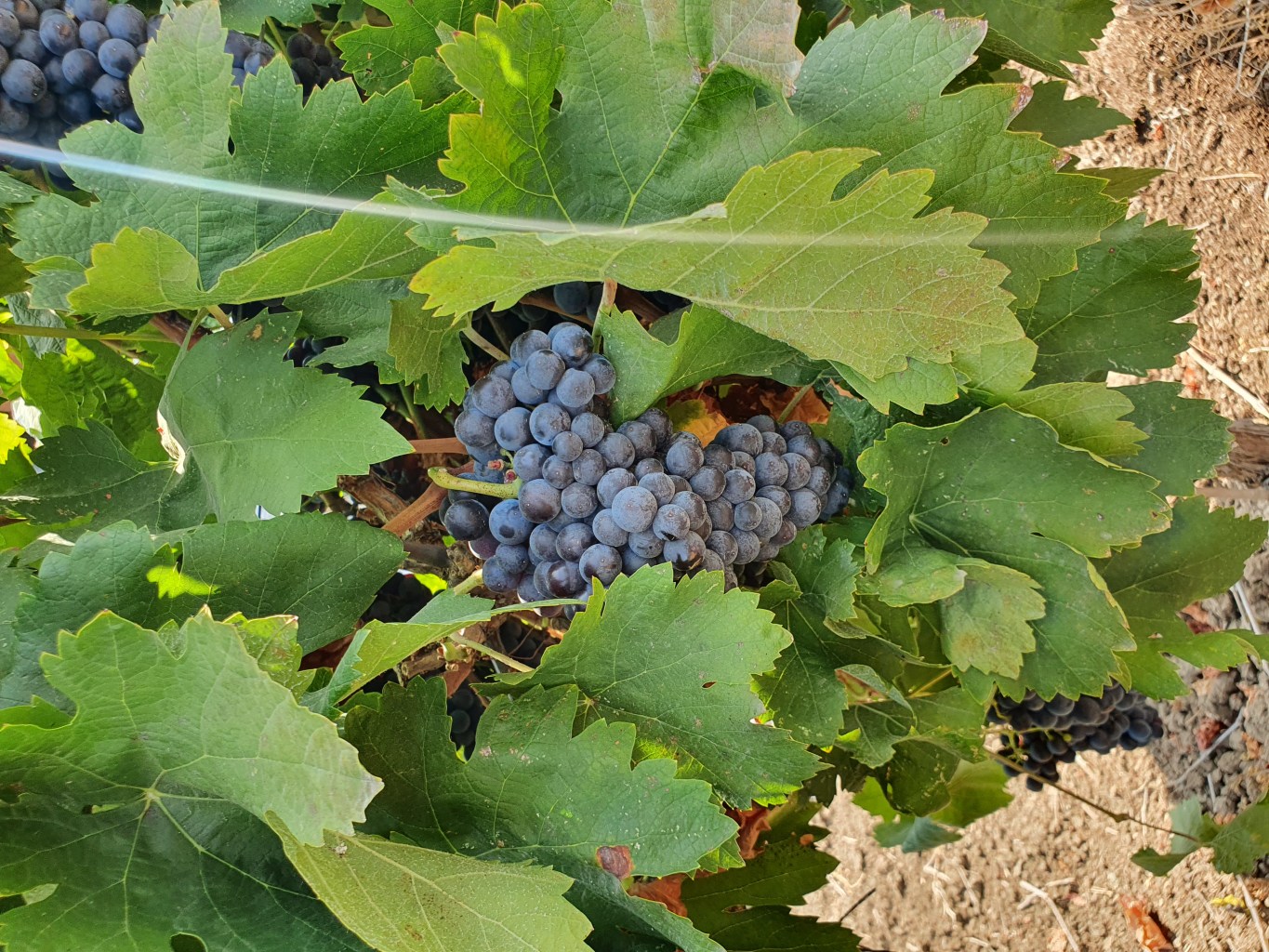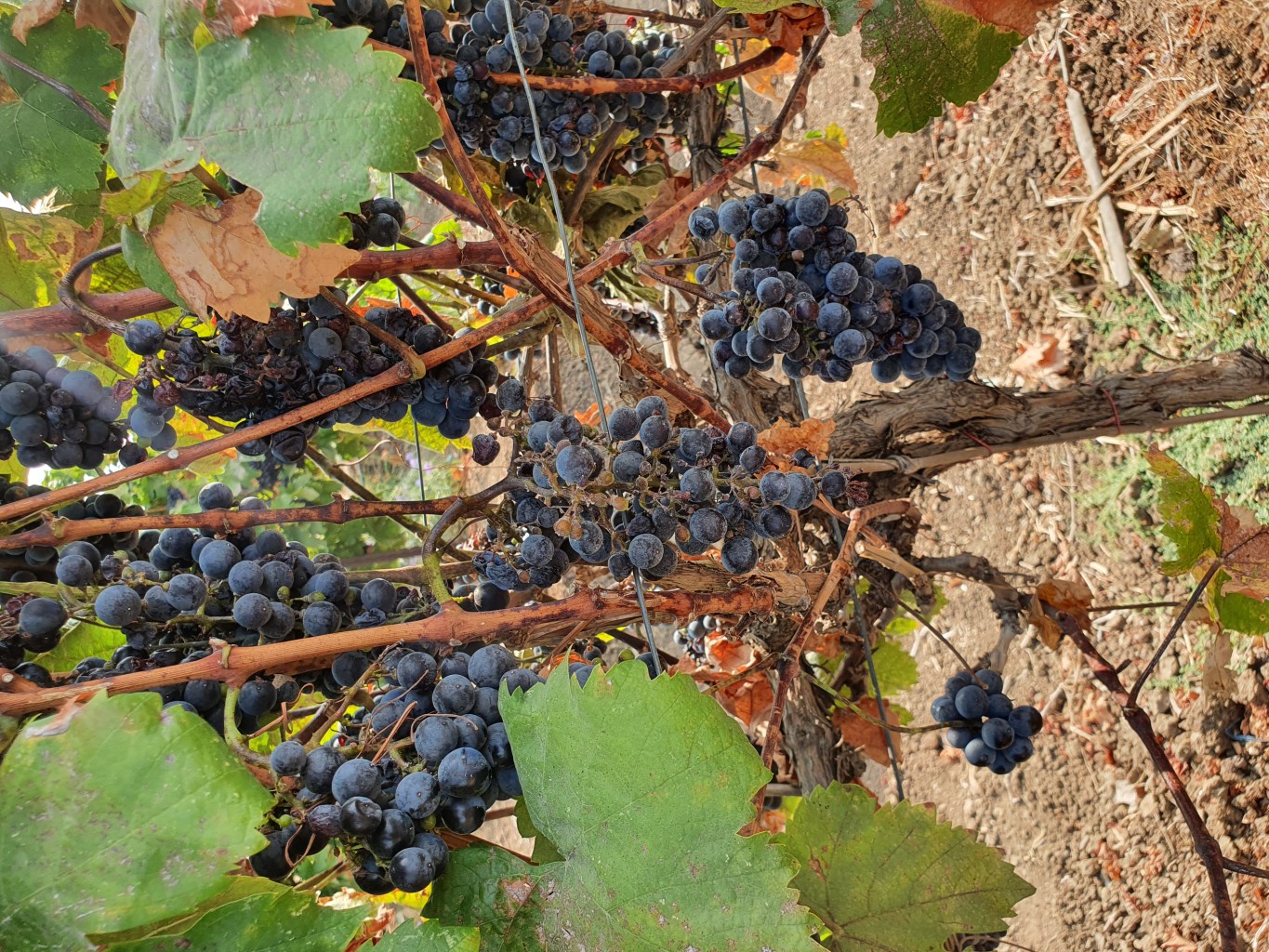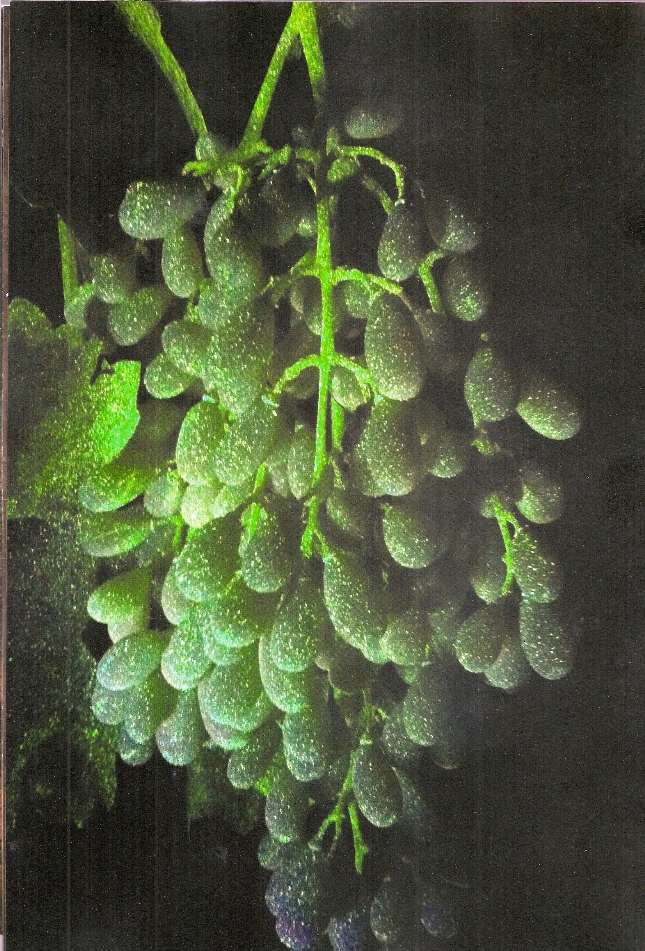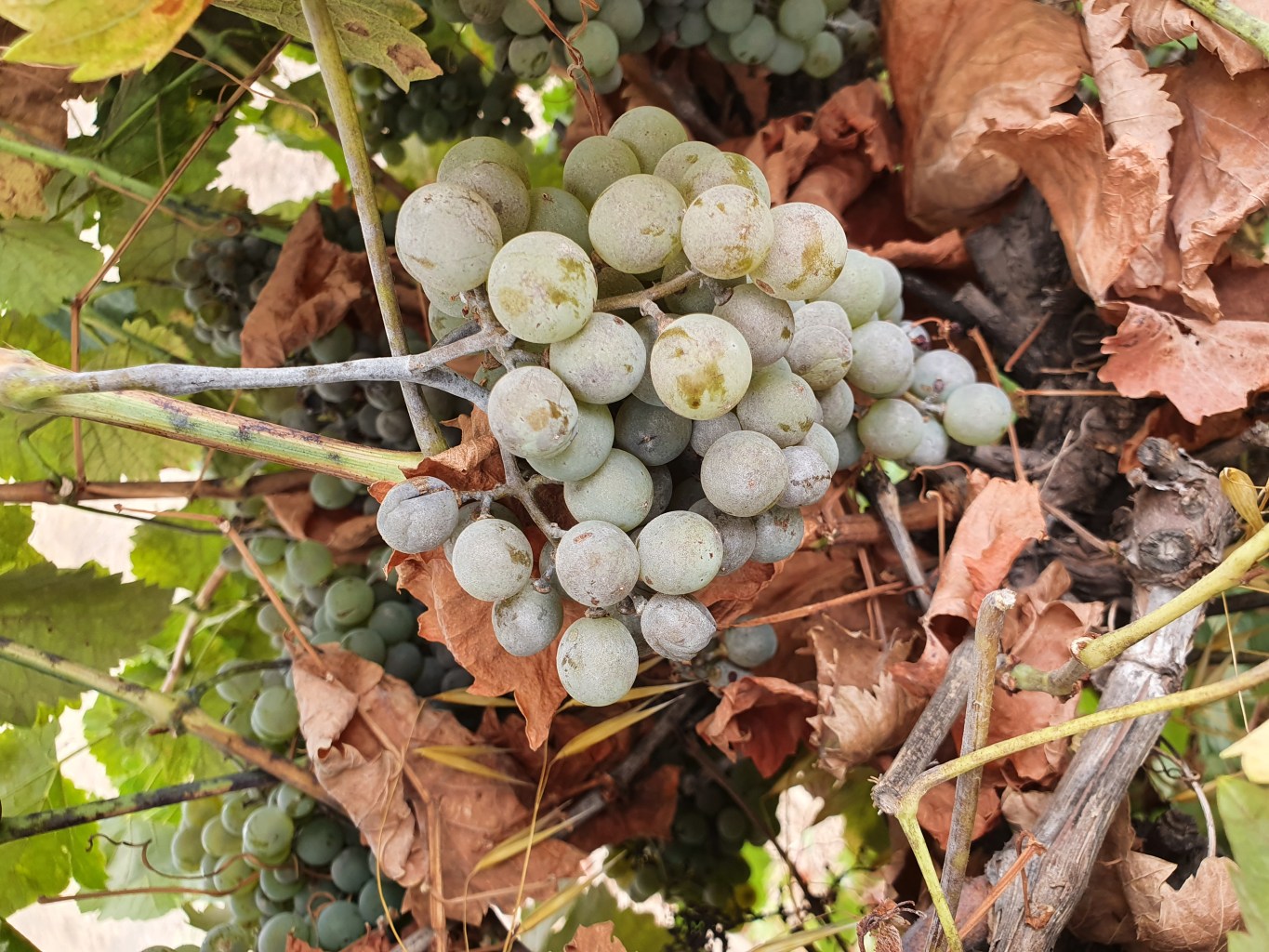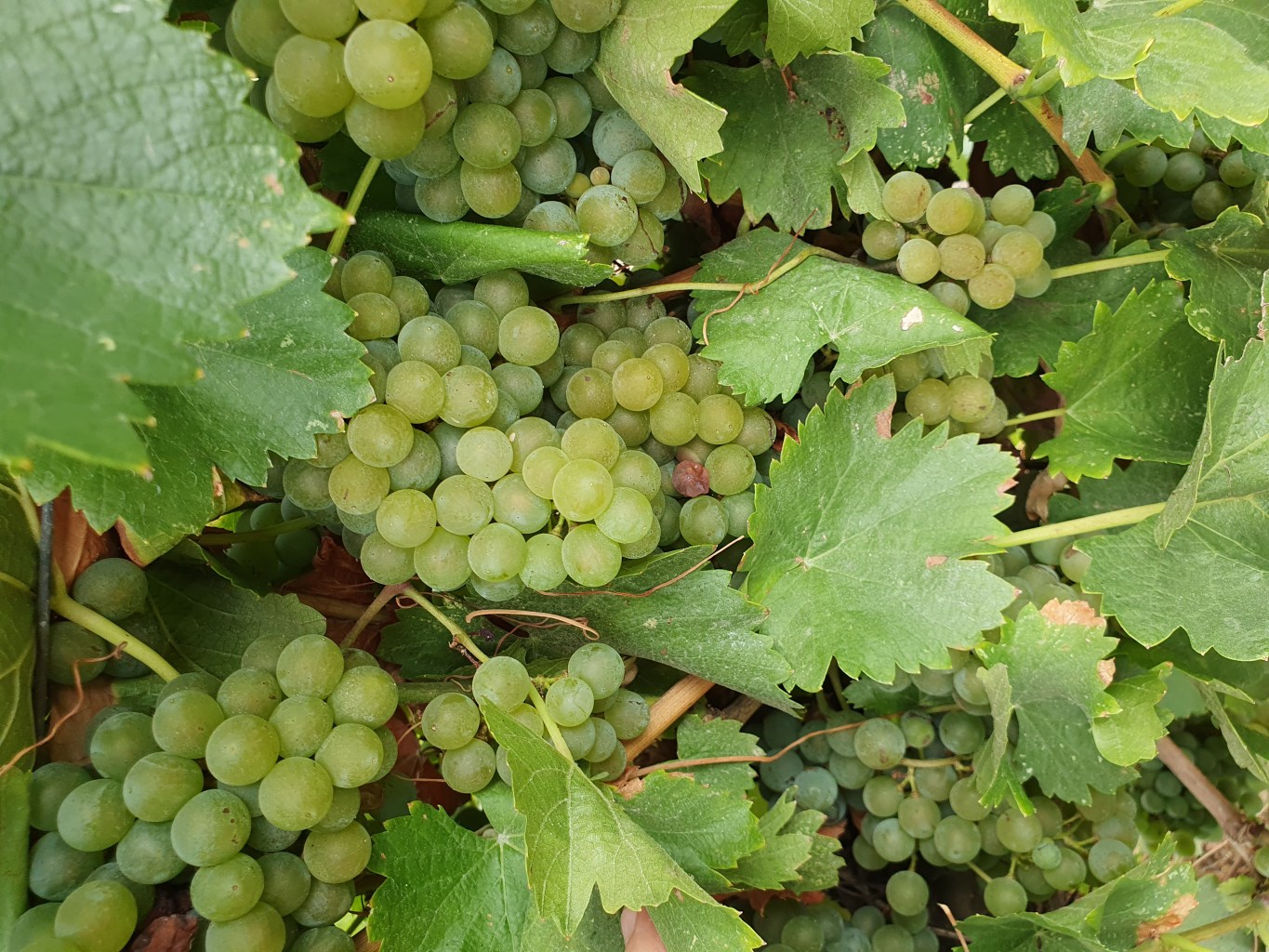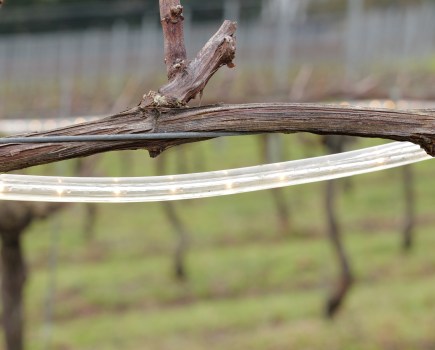Micronutrients are vital to producing healthy vines and high-quality wine.
Managing the nutritional requirements of any vineyard is a complex business because a huge range of variables can have a considerable impact on what nutrition is available to the vines and what augmentation they might need to achieve their optimum output. Amongst other things, these factors will include soil type and pH, the depth of the top soil, which cultivars are being grown and their vigour and the availability of water.
Macronutrients like nitrogen, phosphorus and potassium may be used in the largest relative quantities by vines, but micronutrients like zinc, iron and manganese play a no less significant role in plant health. Deficiency in any of these elements can make vines more susceptible to disease, reduce growth and have a significant impact on the quality of the yield.
“As agronomy advisors, we would get leaf samples sent off and analysed,” said Chris Cooper Fruit & Vine Specialist for Hutchinsons. “Then we’d recommend amending whatever is required to make sure that the vines are in their best health to photosynthesize and produce grapes. Any deficiencies will impact on the growth and vigour of the vines as they go through the season. Deficiencies will become more obvious as the pressure comes on with flower and grape set.”
Chris emphasised that there is no one size fits all approach when it comes to planning a micronutrient management strategy, and much of it requires a swift, reactive style as potential issues and deficiencies are identified.
“Like anything, micronutrients need sensible management and a sensible approach,” Chris said. “The best management strategy is to amend as required throughout the season. That strategy should be scientifically based on leaf analysis or soil analysis. There is no magic bullet, it’s just doing things as they need to be done – perhaps spraying micronutrients mixed in with fungicide applications for example. It is a matter of ongoing management as there are times when micro and macronutrients become more or less important depending on the growth of the vines during the season.”
Understanding Micronutrients
Studies have suggested that manganese, iron and zinc are the most important micronutrients for grapevine growth and fruit quality, but there is a huge variety of elements that come into play in keeping your plants and crop healthy. Each micronutrient plays a different role in plant processes. Here we look at some of the key elements in more detail:
- Zn: Zinc plays a significant role in vine physiology. It assists with the development of healthy green foliage, improves fruit set and is vital in the formation of auxins, which help with stem elongation and growth regulation.
– Symptoms of zinc deficiency include light green chlorosis on the interveinal areas of the leaf. The leaf blades may be smaller and asymmetrical – with one side of the leaf larger than the other. Grape bunches will be small with only a few set berries. In the most serious cases, leaves can exhibit necrotic spots and begin to roll in or die off.
– Zinc deficiency can be exacerbated by high-pH soils containing low levels of organic matter and an excess of phosphorus. Water-logged soils and restricted root growth can result in poor availability of zinc to the plant.
– Zinc fertilisers can be applied to the soil surface in the late winter or early spring.
- B: Boron improves flowering and fruit set, as well as helping to boost the ripening process and also has a positive effect on berry size and the sugar levels they contain.
– A boron deficiency is a serious matter, visible through small bunches with only a few set berries, most being shrivelled and seedless. It is known as millerandage or, the disarmingly charming term ‘pumpkin and pea’. A lack of boron may also be visible through chlorosis around the outside of the leaf, which may turn to a red-brown colour before the leaves die off. The slow growth of shoots with short internodes, putting off large numbers of lateral shoots, may also give a visual clue
– A deficiency can be exacerbated by either highly acidic or alkaline soil. Sandy soils are also particularly prone as boron leaches very easily. High levels of nitrogen or calcium are also warning flags to watch out for.
– A foliar application of boron can take place two or three weeks before bloom.
- Mn: Manganese combats chlorosis, allowing the vine to develop healthy green foliage. A healthy green canopy will lead to better berry development and ultimately an improved yield.
– Manganese deficiency is visible through yellow interveinal chlorosis, while the fine veins stay deep green. These leaves will also be smaller in size.
– Sandy soils, organic soils and soils with a high pH may be particularly problematic when it comes to managing manganese levels.
– If a deficiency is discovered, manganese can be applied via a manganese sulfate foliar application sprayed for immediate effect. It is not recommended to apply treatments directly to the soil, particularly where pH is high or soil contains a high proportion of organic matter as they will rapidly fix the manganese.
- Fe: Iron plays a role in chlorophyll formation and thereby supports early leaf production and the development of healthy green foliage. It can also help berry development and lead to increased sugar levels in the grapes.
– Visible symptoms of an iron deficiency will begin on the youngest leaves, with yellow interveinal chlorosis, most severely faded around the edges. A very severe deficiency will also show up on older leaves and even shoots.
– A deficiency caused by a lack of iron in the soil is rare, but iron is less available in calcareous soils where the pH is high and calcium carbonate locks the micronutrient away. This is known as lime-induced chlorosis. Growers with these conditions will need to use rootstocks suited to the soil type.
– Foliar sprays of iron chelates are recommended for correcting iron deficiencies in vines. Direct soil applications of inorganic iron sources do not tend to be effective.
Recent research
Investigations are continually being made into the impact of micronutrients on yield and fruit quality, as well as examining the best way to deploy them in a vineyard context. For example, a 2021 study looked at the effects of different zinc fertilisation strategies on the growth of vines and their uptake of nutrients. This study suggested that a foliar application was more effective than applying directly to the soil for increasing the yield and quality of the grapes produced.
A 2022 study published in Plants examined the fungal pathogen that causes powdery mildew. Management of this destructive disease has previously been undertaken through the use of fungicide sprays. However, with increasing reports of fungicide-resistant strains of powdery mildew, and the global exigency to reduce the use of pesticides an environmentally friendly alternative is sought.
Field experiments in Israel reportedly showed that berries treated with macronutrient and micronutrient fertilisers showed a significant increase in anti-fungal and antioxidant metabolites, suggesting “possible indirect activity against the pathogen” as well as an improvement in levels of esters and organic acids that contribute to wine quality. The field trials included the foliar application of potassium phosphate fertiliser, fertilisers containing boron and zinc and a mixed fertiliser called TruPhos Platinum. They were seen to be as effective as the fungicide tebuconazole at reducing the incidence and severity of powdery mildew.
Dr Lior Gur of the Shamir Research Institute said the key takeaway from their work was that the “integration of macronutrients and micronutrients in disease management in the vineyard will: 1) reduce pesticides residue in the vineyard; 2) reduce fungicides resistance risk, and 3) may improve wine quality.”
Although not directly involved in the research, NutriAg, the supplier of TruPhos was delighted by the positive results of the study.
“Good growers understand that proper micronutrient nutrition is required for strong yields and quality crops,” said NutriAg’s Director of Research and Communication, Christopher Trobacher. “But this recent study highlights an additional benefit of foliar fertilisation that will be new for a lot of vineyard managers. On a recent trip to Israel the lead author, Dr Gur, explained that foliar-applied nutrition also helped manage powdery mildew in apple and mango. It will be exciting to watch where this research goes in the coming years and to continue expanding the list of benefits associated with our high quality foliar fertilisers like TruPhos.”
Read the research: Gur L , Cohen Y, Frenkel O, Schweitzer R, Shlisel M, Reuveni M. Mixtures of Macro and Micronutrients Control Grape Powdery Mildew and Alter Berry Metabolites. Plants. 2022; 11(7):978. https://doi.org/10.3390/plants11070978
Micronutrient delivery technologies: Focus on spraying
The direct application of micronutrients is an ongoing part of vineyard management. It can be a more problematic issue for organic or biodynamic properties where there are restrictions on what substances and products are permitted for use. The Soil Association and Demeter have detailed guidelines on what can be applied within their certification standards, although this is quite heavily restricted in terms of foliar applications.
For vineyard managers who are able to use standard micronutrient applications, there are a number of different micronutrient delivery technologies available. Drenches apply the micronutrients to the soil around the base of the vines. They can be effective for addressing soil deficiencies and providing a slow release over time. Controlled-release fertilisers are granular products that provide a sustained supply of micronutrients across the whole growing season. Similarly, soil amendments like compost and biochar can improve soil structure and fertility in the longer term to improve the vines’ access to nutrients.
One of the most commonly found methods of application is foliar sprays. By spraying directly onto the leaves of the grapevine deficiencies can be corrected. The micronutrients are quickly absorbed into the plant which can provide rapid improvement.
Top tips
Even the best equipment can do a bad job if it hasn’t been set up properly. Our top tips for getting the most from your sprayer are:
- Time your spraying to avoid rain or high winds. Remember that drift will be lower with coarser sprays even though you sacrifice a degree of coverage.
- Calibrate your sprayer to check that the coverage is even and to find that balance between coarse and fine.
- Target the canopy of one row only per pass for the best efficiency and efficacy.
- Consider an adjuvant to help with the spread and uptake of droplets, with the added benefit of reducing the amount of water required overall.
Vitifruit supplies many sprayers from different manufacturers that will meet the needs of vineyards according to their size, budget and the technical ability of the operator. A basic system starts in the region of £3,000. Something with significantly more bells and whistles will set you back £40,000 or so. Much of this machinery has been tried and tested in UK vineyards over several decades, so it is accepted as the “standard kit”. However, there are some new technological innovations in the area.
“There are two principal ways to apply chemicals onto vines using a spray,” explains David Sayell of Vitifruit. “Either by traditional nozzles or by specialised air shear nozzles, where the spray droplets are given an electrostatic charge.
“The droplets are of a very specific size and thanks to the electrostatic charge it enables the chemicals to bond to the leaf surfaces and berries exceptionally well. Due to its efficiency, the spray rates and litres per hectare can be significantly reduced enabling more efficient use of tractor and driver time with more hectares sprayed per tank load. The electrostatic sprayers are sold in big numbers around the world where water is a precious resource and chemical costs have to be minimised.”
Micronutrients, wine quality and wine fraud
Micronutrients are essential not just for the successful development of grapes, but also for the flavour and aroma of the finished product. The specifics of this can vary depending on the grape variety, growing conditions and winemaking techniques. In general terms though, it may be observed that zinc is essential for the synthesis of several aromatic compounds including terpenes and thiols. A zinc deficiency may result in a wine with reduced aroma and complexity. A lack of manganese or iron can result in decreased colour intensity in red wines. As well as impacting berry size and yield, boron deficiency may produce wines with a decreased flavour intensity.
As with all things, balance is the key. Excess levels of micronutrients can wreak their own havoc on wine quality. Too much and you may end up with an unpleasant metallic, astringent or bitter flavours. Too much zinc can result in high acidity levels that may be difficult to manage. High manganese or boron levels have been seen to contribute to the development of off-flavours, particularly in white wines. Excess levels of iron or copper can also contribute to the oxidative degradation of the wine, which reduces the aroma intensity and the stability of the colour. Proof that you can have too much of a good thing.
Research has suggested that the analysis of micronutrients could also be useful in the fight against counterfeit wine. A 2017 study in Brazil showed “that it is possible, based on the boron isotopic ratio, to differentiate Brazilian red wines from Chilean, Italian and Portuguese red wine.” The study was even able to identify differences in boron concentrations between the Southern and the North-Eastern Brazilian wine regions, suggesting the possibility in the future of developing “a fingerprint for each wine-producing area of the country.”
This is another tool, along with other new technologies like fluorescence spectroscopy, that are being developed to continue the global battle against wine forgery. But of course, you have to open the bottle first!
Read the original study: Almeida, Cibele & Almeida, Ana & Saint’Pierre, Tatiana & Godoy, Jose. (2017). Boron Isotopic Ratio in Brazilian Red Wines: a Potential Tool for Origin and Quality Studies? Journal of the Brazilian Chemical Society. 28. https://doi.org/10.21577/0103-5053.20170043
- Traditional air blast sprayer with linear fan
- Martignani Electrostatic sprayer
- Lipco mounted recycling over-row cross-flow fans type GSG
- Martignani Electrostatic sprayer (showing chemical deposition under UV light)
- Grape berries treated with mixtures of macro and micronutrients
- Grape berries cv. Carignan is severely infected with powdery mildew from untreated control treatment
- Martignani Electrostatic sprayer (showing chemical deposition under UV light)
- Grape berries severely infected with powdery mildew from untreated control treatment
- Grape berries treated with mixtures of macro and micronutrients
For more like this, sign up for the FREE Vineyard newsletter here and receive all the latest viticulture news, reviews and insight


